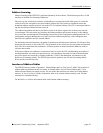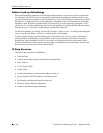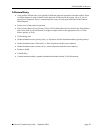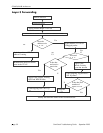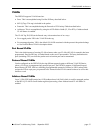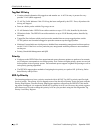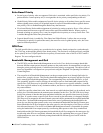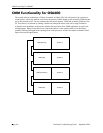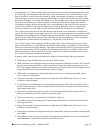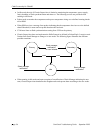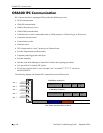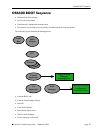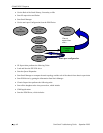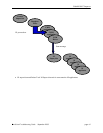
CMM Functionality for OS6600
OmniSwitch Troubleshooting Guide September 2005 page -55
The chassis like, or V-Chassis, strategy allows the system to keep the same management interface. Since
on Falcon/Eagle, the management uses the notion of slot, this notion of slot is retained for Hawk. Since
there is no chassis, we need to provide a means by which a slot number is assigned to an element. The
current strategy is to have the user assigning a slot number, via a push button on the front panel, located
below the LCD display. The default slot number is one. This mechanism provides several advantages. It
removes the risk that from one reboot to another a dynamic allocation protocol might under certain
circumstances assign a different slot number. The second advantage is that even if the user removes an
element (slot) or adds one, the current configuration will still be applicable. There is no need to have
successive numbers in a stack. Eight (8) is the maximum number of slots allowed in a single stack.
The V-Chassis provides to the user the same interface and the same set of commands to configure the
system. The user configures a port; adds a port in a VLAN, etc, by providing both the port number and the
slot number. Chassis Supervision, NI Prober and Supervision and IPC are the main applications that are
impacted by the virtual chassis concept. They will both rely on the first application to have information
allowing them to perform their services correctly (i.e. NI present, NI UP, NI down).
The V-chassis imposes some constraints on Chassis Supervision. Chassis Supervision does not run the
Falcon election protocol, i.e. Hello Protocol, to define the mode (primary or secondary). Chassis Supervi-
sion receives the mode from Stack Manager. This implies that the Hello Protocol is not activated on both
the primary and secondary CMM, because the Stack Manager monitors the two CMMs. In Hawk three
modes are defined for Chassis Supervision. The new mode is idle. In the idle mode allows the system to
have Chassis Supervision available on all elements.
In primary mode, Chassis Supervision behaves as defined in Falcon with the following restrictions:
• CSM (Chassis State Machine) does not activate the Hello Protocol.
• HSM (Hardware Service Manager) does not need to control the available power when a NI is declared
present. On a real chassis (Falcon or Eagle), when Chassis Supervision learns the presence of a new
NI, it first computes whether or not there is enough power to switch on the new NI. This phase must be
bypassed on Hawk since each element has its own power supply.
• HSM needs to communicate to all elements within the stack a new temperature threshold, when it
receives the new configuration.
• Prober does not need to monitor the presence of either the NI or CMM boards. The service is now
available via Stack Manager.
• CVM (Chassis Version Manager) when synchronizing the primary Flash with the secondary Flash
needs to extend the service to all the elements present in the stack, ensuring that all elements have the
same content on the flash.
• When a new element is inserted in the stack, CVM must control that the flash content of this new
element is synchronized with the content of the primary flash.
• There is no need to have a synchronization of the MAC addresses.
• In secondary mode, Chassis Supervision, Chassis Supervision behaves as defined in Falcon with the
following restrictions:
• Prober does not need to monitor the presence of either the NI or CMM boards. The service is now
available via Stack Manager.
• Prober needs to monitor the temperature and report a temperature rising over a defined warning thresh-
old to HSM.
• When HSM receives a message from prober indicating that the temperature has risen over the defined
shutoff threshold, it must send a trap and shutdown the local unit.



